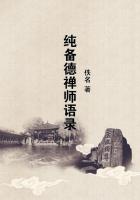Uri is, as seems to be signified by the root of the word, Ur, pre-eminently the primitive district. At the present day it forms asingle mark, without any division into communes. Villages have been formed, Fluelen, Altdorf, Bürglen, Erstfeld, Silenen,Amstäg, Waset, and Andermatt; but except for the care of the power, which is to some extent in their charge, these villagesdo not form distinct political corporations. They are not true communes; the inhabitant exercises his right of user in anylocality to which he may remove. The inhabitant of Silenen may send his cattle into the valley of Schaechenthal, and theinhabitant of this valley may send his on to the alp of the Surènes. In this system there is no other division than that traced bynature itself, which has divided the canton into two distinct parts, the district of Uri, and that of Urseren, separated by thedeep gorge of the Schoellenen, bordered on both sides by perpendicular granite rocks, with the Reuss roaring at the bottom.
There are, therefore, as it were, two marks, tbe upper mark above the Urner Loch, and the lower mark below it.
In the lower mark , a great part of the plain has become private property; the woods, alps and a few allmends , in theneighbourhood of the villages, alone remaining in the primitive community. In the high valley of Urseren, fiiteen kilometresin length and two at the most in breadth, the splendid pastures, watered by the Reuss and by the mists of the glaciers, belongto the body of commoners of Urseren.
A touching legend is attached to the method in which the boundary between the marks of Uri and Glaris was formerly fixed.
The two cantons are separated by frozen peaks and a lofty chain of mountains everywhere except at the Klausen passage,through which one can easily pass from the valley of the Linth to that of the Reuss. In times past, there were disputes andstruggles between the people of Uri and Glaris as to the debateable boundary of their pastures. To decide the question, theyagreed that, on St George's day, a runner should start at the first cock-crow from the bottom of each valley, and that thefrontier should be fixed at the point where they met. The start was to be superintended by inhabitants of Glaris at Altdorf,and by inhabitants of Uri at Glaris. The people of Glaris fed the cock, which was to give the signal to their runner, as muchas possible, hoping that, being in full vigour, it would crow early in the morning. The people of Uri, on the contrary, starvedtheir cock; hunger kept it awake, and it gave the signal for the start long before dawn. The runner started from Altdorf,entered the Schaechenthal, crossed the top and began to descend on the other side towards Linth. The Glaris cock crowedso late that their runner met the one from Uri far down the slope on his side. Desperate at the thought of the disgrace whichwould be reflected on his countrymen, he begged earnestly for a more equitable boundary. "Hearken," answered the other,"I will grant you as much land as you can cross, ascending the mountain with me on your back." The bargain was struck.
The Glaris man ascended as far as he could, when he fell dead from fatigue on the banks of the stream called Scheidbaechli (the boundary brook). This is why Urnerboden, situated on the slope facing Glaris, beyond the division of the water, belongsto Uri. It is a curious legend, in which, as so often in Swiss history, the citizen gives his life for the good of his country.
There is no precise measurement of the extent of the allmends in Uri. An estimate made in 1852 reckons the alps belongingto the lower district of the canton as containing 5.417 kuhessens (6) . As the district numbers about 2,700 families ofcommoners, this allows about the keep of two cows on an average for each family.
The communal forests are of great extent, valuable and well kept up; they are worth at least 4,000,000 francs, which makesa capital of about 1,400 francs for each family. To shew how the petition of the wood is effected, we will give the table ofthat made in 1865, in the village of Schaddorf, near Altdorf. (7) The first class is that of citizen shareholders who have had fora whole year "fire and light," Feuer und Licht, who heat an oven and possess property: they are entitled to fell six large firs;their number amounted to 120. The second class comprises those who have fire and light, an oven, but no property: they areentitled to four firs. There were 30 in this category. The third class is that of persons living alone, and having no property:
there were nine of them, each being entitled to three fir trees. Finally, in the fourth class are those commoners who have hadfire and light, but who have no house of their own: they can only claim two fir trees. There were 25 of them. The totalnumber of commoners was therefore 184. Of these, 52 had obtained, in addition, timber for new buildings or for repairs; 178large trunks having been allotted for this purpose. These distributions are large, and enable the families to live in comfort:
and nowhere are the cultivators so well lodged as in Switzerland. This explains the origin of the châlets which the strangeradmires. The communal forest allows of their construction and their maintenance.
Besides its alp and forest, the mark of Uri possesses 400 hectares of cultivated land, which when equally distributed giveabout 14 ares of garden to each family, from which to raise vegetables and fruit, and flax or hemp for the household linen.
All this does not make a competence, but it is a gueanteed means of attaining it; in any case, it is a certain preservativeagainst extreme distress. Add to what is supplied by the communal property the produce of private property and individuallabour, and all essential wants are amply provided for.
The principle which here directs the partition of the produce of the communal possessions is that of the most remote times:















